Skyrc T200 User Manual

T200
AC / DC Dual Balance Charger/Discharger
Instruction Manual
[Version 1.0]

Table of Contents
Introduction |
01 |
Special Features |
03 |
Warning and Safety Notes |
05 |
Program Flow Chart |
08 |
Explanation of Buttons |
09 |
Power and Battery Connection |
10 |
Charge Operation |
12 |
Lithium Battery Program (LiPo/LiFe/Lilon/LiHV) |
13 |
NiMH/NiCd Battery Program |
16 |
Pb Lead-acid Battery Program |
20 |
Battery Memory Set and Call Out |
23 |
System Setting |
25 |
Battery Voltage Meter |
27 |
Battery Resistance Meter |
28 |
Warning and Error Message |
29 |
The Set Contains |
30 |
Specification |
31 |
Conformity Declaration |
32 |
Regulatory Information |
33 |
Commonly Used Terms |
34 |
Warranty and Service |
35 |
 WARNING:
WARNING:
This charger is not intended for use by persons (including children) with reduced physical, sensory or mental capabilities, or lack of experience and knowledge, unless they have been given supervision or instruction concerning use of the appliance by a person responsible for their safety.
Children should be supervised to ensure that they do not play with the charger. Do not recharge non-rechargeable batteries!
During charging, the battery must be placed in a well-ventilated area!
Never leave the charger unattended when charging the battery.
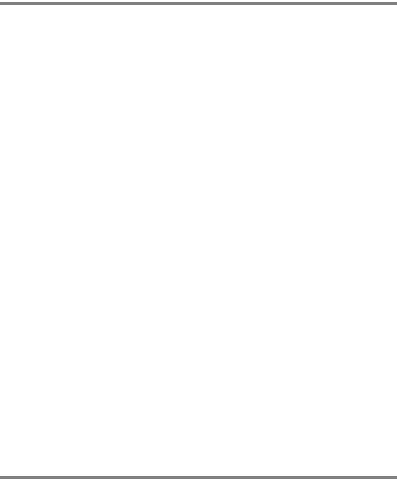
Introduction
Congratulations on your choice of SKYRC T200 AC/DC Dual Balance Charger/Discharger. This unit is simple to use, but the operation of a sophisticated automatic charger such as SKYRC T200 does require some knowledge on the part of the user. These operating instructions are designed to ensure that you quickly become familiar with its functions. It is therefore important that you read right through the Operating Instructions, Warning and Safety Notes before you attempt to use your new charger for the first time. We hope you have many years of pleasure and success with your new battery charger.
SKYRC T200 is a twin-channel charger with two independent circuits which can charge batteries of varying chemistries (LiPo/LiFe/Lilon/LiHV
/NiMH/NiCd/Pb) simultaneously. The charger delivers dedicated 100W integrated power per channel and can fill two batteries simultaneously at up to 12 amps each. It comes ready to charge in the most compact design yet while taking up minimal space in the pit area. And the handle design ensures the charger is convenient to carry with. Except SkyRC normal charging programs, it is versatile with the addition of AGM and Cold modes for Lead Acid(Pb) battery.
Please BE SURE to read these INSTRUCTIONS, WARNING and SAFETY NOTES before you use the charger for the first time.It can be dangerous to mis-handle batteries and battery chargers, as there is always a risk of batteries catching fire and exploding.
Mishandling batteries and battery
chargers is extremely dangerous,
which may cause fire and explosion.
T200 |
01 · |

Introduction
Please read this entire operating manual completely and attentively before using this product, as it covers a wide range of information on operating and safety. Or please do use this product in company with a specialist!
LCD Display
Scroll Through the Main Menu
Stop Any Charge Processes
Alter Values
See the Status of Individual
Cells in Balance Charge Mode
Switch From
Channel A to B or
Vice Versa
Carrying Handle
Smart Ventilation Fan
DC Input 11-18V
Resume or Start
Charge Processes
LED Indicator
Balance Lead
Socket
Output Socket
Temperature
Sensor Port
Ventilation
Slot
AC Input 100-240V
· 02 |
T200 |
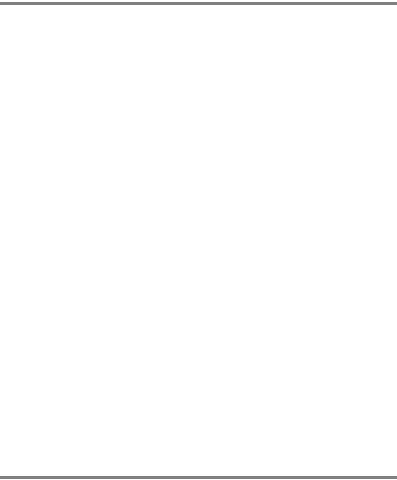
Special Features
Dual Channel Charger
SkyRC T200 allows you to charge 2 batteries with different chemistries simultaneously, and it will intelligently and automatically initiate the charging to their maximum capacity. Charging of each channel is 100Watts. Total output power of this charger is 200Watts.
Optimized Operating Software
SkyRC T200 features the co-called AUTO function that sets the feeding current during the process of charging/discharging. For Lithium batteries, it can help prevent overcharging which may lead to explosion. It will disconnect the circuit automatically and alarm once detecting malfunction, to achieve maximum safety and minimize the trouble. All the settings can be configured by users.
Voltage Calibration (for expert user only)
SkyRC T200 allows you to calibrate the voltage directly on the device with a 6S LiPo battery. (For more information please contact us at support@skyrc.cn)
Memory of Last Operation
SkyRC T200 will memorize your last operation of charging/discharging before power off.
AGM Charge and Cold Charge
For Pb batteries, there are two more charging modes: AGM charge and Cold charge.
Battery Memory (Data Store/Load)
The charger can store up to 10 different charge/discharge profiles for each channel. You can keep the data pertaining to program setting of the battery of continuous charging or discharging. Users can call out these data at any time without any special program setting.
Terminal Voltage Control(TVC)
The charger allows user to change the end voltage. (for expert user only)
Balancing Individual Cells Battery During Discharging
During the process of discharging, SKYRC T200 can monitor and balance each cell of the battery individually. Error message will be indicated and the process will be ended automatically if the voltage of any single one cell is abnormal.
Fast Charge and Storage Mode of Lithium Battery
Function of the two modes differs from each other. “FAST CHG” minimizes battery charge time, while “STORAGE” has the capacity to control the final battery voltage, which is necessary and helpful for a rarely used battery.
T200 |
03 · |

Special Features
Re-Peak Mode of NiMH/NiCd Battery
In re-peak charge mode, the charger can peak charge the battery once, twice or three times in a row automatically. This is good for making the battery fully charged.
Cyclic Charging/Discharging
1 to 5 cyclic and continuous process of charge > discharge or discharge > charge is operable for battery refreshing and balancing to stimulate the battery's activity.
Automatic Charging Current Limit
You can set up the upper limit of the charging current when charging your NiMH or NiCd battery, it is useful for the NiMH battery of low impedance and capacity in the 'AUTO' charging mode.
Battery Voltage Meter
The user can check battery's total voltage, the highest voltage, the lowest voltage and each cell's voltage.
Battery Internal Resistance Meter
The user can check battery voltage and battery internal resistance.
Capacity Limit The charging capacity is always calculated as the charging current multiplied by time. If the charging capacity exceeds the limit, the process will be terminated automatically when you set the maximum value.
Temperature Threshold*
The battery's internal chemical reaction will cause the temperature of the battery to rise. If the temperature limit is reached, the process will be terminated.
* This function is only available by connecting optional temperature probe, which is not included in the package.
Processing Time Limit
You can also limit the maximum process time to avoid any possible defect.
· 04 |
T200 |
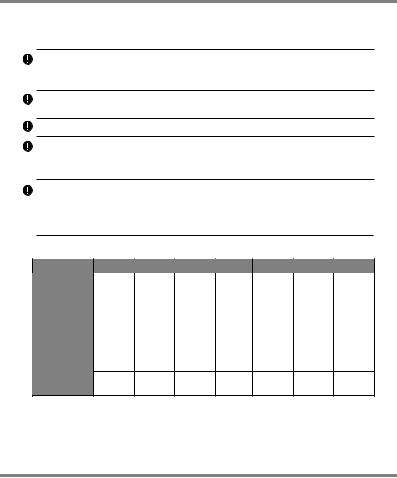
Warning and Safety Notes
These warnings and safety notes are particularly important. Please follow the instructions for maximum safety; otherwise the charger and the battery can be damaged or at worst it can cause a fire.
Never leave the charger unattended when it is connected to its power supply. If any malfunction is found, TERMINATE THE PROCESS AT ONCE and refer to the operation manual.
Keep the charger well away from dust, damp, rain, heat, direct sunshine and vibration. Never drop it.
The allowable AC input voltage is 100~240V AC and DC input 11-18V.
This charger and the battery should be put on a heat-resistant, noninflammable and nonconductive surface. Never place them on a car seat, carpet or similar. Keep all the inflammable volatile materials away from operating area.
Make sure you know the specifications of the battery to be charged or discharged to ensure it meets the requirements of this charger. If the program is set up incorrectly, the battery and charger may be damaged .It can cause fire or explosion due to overcharging.
Standard Battery Parameters
|
LiPo |
LiIon |
LiFe |
LiHV |
NiCd |
NiMH |
Pb |
|
Nominal |
3.7V/cell |
3.6V/cell |
3.3V/cell |
3.7V/cell |
1.2V/cell |
1.2V/cell |
2.0V/cell |
|
Voltage |
||||||||
|
|
|
|
|
|
|
||
Max Charge |
4.2V/cell |
4.1V/cell |
3.6V/cell |
4.35V/cell |
1.5V/cell |
1.5V/cell |
2.46V/cell |
|
Voltage |
||||||||
|
|
|
|
|
|
|
||
Storage |
3.8V/cell |
3.7V/cell |
3.3V/cell |
3.85V/cell |
n/a |
n/a |
n/a |
|
Voltage |
||||||||
|
|
|
|
|
|
|
||
Allowable |
1C |
1C |
4C |
1C |
1C-2C |
1C-2C |
0.4C |
|
Fast Charge |
||||||||
|
|
|
|
|
|
|
Min. Discharge
3.0-3.3V/cell 2.9-3.2V/cell 2.6-2.9V/cell 3.1-3.4V/cell 0.1-1.1V/cell 0.1-1.1V/cell 1.8V/cell
Voltage
Be very careful to choose the correct voltage for different types of battery otherwise you may cause damage to the batteries. Incorrect settings could cause the cells to fire or explode.
T200 |
05 · |
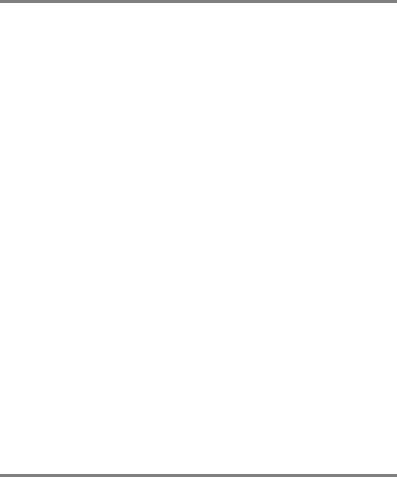
Warning and Safety Notes
 Never attempt to charge or discharge the following types of batteries.
Never attempt to charge or discharge the following types of batteries.
A battery pack which consists of different types of cells (including different manufacturers)
A battery that is already fully charged or just slightly discharged. Non-rechargeable batteries (Explosion hazard).
Batteries that require a different charge technique from NiCd, NiMh, LiPo or Gel cell (Pb, Lead acid).
A faulty or damaged battery.
A battery fitted with an integral charge circuit or a protection circuit.
Batteries installed in a device or which are electrically linked to other components.
Batteries that are not expressly stated by the manufacturer to be suitable for the currents the charger delivers during the charge process.
 Please bear in mind the following points before commencing charging:
Please bear in mind the following points before commencing charging:
Did you select the appropriate program suitable for the type of battery you are charging?
Did you set up adequate current for charging or discharging?
Have you checked the battery voltage? Lithium battery packs can be wired in parallel and in series, i.e. a 2 cell pack can be 3.7V (in parallel) or 7.4V (in series).
Have you checked that all connections are firm and secure?
Make sure there are no intermittent contacts at any point in the circuit.
 Charging
Charging
During charge process, a specific quantity of electrical energy is fed into the battery. The charge quantity is calculated by multiplying charge current by charge time. The maximum permissible charge current varies depending on the battery type or its performance, and can be found in the information by the battery manufacturer. Only batteries that are expressly stated to be capable of quickcharge are allowed to be charged at rates higher than the standard charge current.
Connect the battery to the terminal of the charger: red is positive and black is negative. Due to the difference between resistance of cable and connector, the charger can not detect resistance of the battery pack, the essential requirement for the charger to work properly is that the charge lead should be of adequate conductor cross-section, and high quality connectors which are normally goldplated should be fitted to both ends.
Always refer to the manual by battery manufacturer about charging methods, recommended charging current and charging time. Especially, the lithium battery should be charged according the charging instruction provided by the manufacturer strictly.
· 06 |
T200 |

Warning and Safety Notes
Attention should be paid to the connection of lithium battery especially.
Do not attempt to disassemble the battery pack arbitrarily.
Please get highlighted that lithium battery packs can be wired in parallel and in series. In the parallel connection, the battery s capacity is calculated by multiplying single battery capacity by the number of cells with total voltage stay the same. The voltages imbalance may cause fire or explosion .Lithium battery is recommended to charge in series.
 Discharging
Discharging
The main purpose of discharging is to clean residual capacity of the battery, or to reduce the battery voltage to a defined level. The same attention should be paid to the discharging process as charging. The final discharge voltage should be set up correctly to avoid deep-discharging. Lithium battery can not be discharged to lower than the minimum voltage, or it will cause a rapid loss of capacity or a total failure. Generally, lithium battery doesn't need to be discharged. Please pay attention to the minimum voltage of lithium battery to protect the battery.
Some rechargeable batteries have a memory effect. If they are partly used and recharged before the whole charge is accomplished, they remember this and will only use that part of their capacity next time. This is a memory effect. It is said that NiCd and NiMH batteries are suffering from memory effect. NiCd has more memory effect than NiMH.
T200 |
07 · |
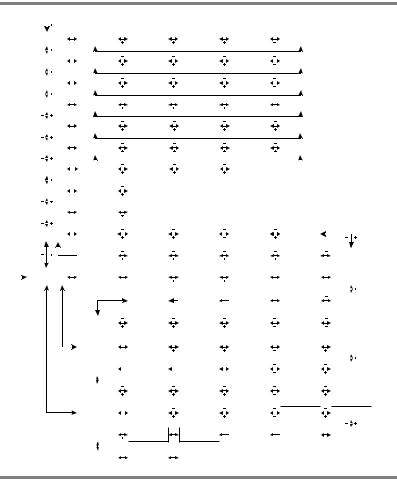
Program Flow Chart
BATT/PROGRAM |
|
LiPo BALANCE CHG |
|
LiPo CHARGE |
|
LiPo FAST CHG |
|
LiPo STORAGE |
|
LiPo DISCHARGE |
|
|
|
|
|
|
|
|
|||||||||||||
LiPo BATT |
ENTER |
2.0A |
7.4V (2S) |
|
|
2.0A |
7.4V (2S) |
|
2.0A |
7.4V (2S) |
|
2.0A |
7.4V (2S) |
|
2.0A |
7.4V (2S) |
|
|
|
|
|
|
|
|
|||||||
|
|
|
|
|
|
|
|
|
|
|
|
|
|
|
|
|
|
|
|
||||||||||||
BATT/PROGRAM |
|
LiFe BALANCE CHG |
|
LiFe CHARGE |
|
LiFe FAST CHG |
|
LiFe STORAGE |
|
LiFe DISCHARGE |
|
|
|
|
|
|
|
|
|||||||||||||
LiFe BATT |
ENTER |
2.0A |
6.6V (2S) |
|
|
2.0A |
6.6V (2S) |
|
2.0A |
6.6V (2S) |
|
2.0A |
6.6V (2S) |
|
2.0A |
6.6V (2S) |
|
|
|
|
|
|
|
|
|||||||
|
|
|
|
|
|
|
|
|
|
|
|
|
|
|
|
|
|
|
|
||||||||||||
BATT/PROGRAM |
|
Lilo BALANCE CHG |
|
Lilo CHARGE |
|
Lilo FAST CHG |
|
Lilo STORAGE |
|
Lilo DISCHARGE |
|
|
|
|
|
|
|
|
|||||||||||||
LiIo BATT |
ENTER |
2.0A |
7.2V (2S) |
|
|
2.0A |
7.2V (2S) |
|
2.0A |
7.2V (2S) |
|
2.0A |
7.2V (2S) |
|
2.0A |
7.2V (2S) |
|
|
|
|
|
|
|
|
|||||||
|
|
|
|
|
|
|
|
|
|
|
|
|
|
||||||||||||||||||
BATT/PROGRAM |
|
LiHV BALANCE CHG |
|
LiHV CHARGE |
|
LiHV FAST CHG |
|
LiHV STORAGE |
|
LiHV DISCHARGE |
|
|
|
|
|
|
|
||||||||||||||
LiHV BATT |
ENTER |
2.0A |
7.6V (2S) |
|
|
2.0A |
7.6V (2S) |
|
2.0A |
7.6V (2S) |
|
2.0A |
7.6V (2S) |
|
2.0A |
7.6V (2S) |
|
|
|
|
|
|
|
||||||||
|
|
|
|
|
|
|
|
|
|
|
|
|
|
|
|
|
|
|
|
|
|
|
|
|
|
|
|
|
|
|
|
BATT/PROGRAM |
|
NiMH CHARGE |
|
|
NiMH Auto CHARGE |
|
NiMH DISCHARGE |
|
NiMH RE-PEAK |
|
NiMH CYCLE |
|
|
|
|
|
|
|
|||||||||||||
NiMH BATT |
ENTER |
CURRENT |
|
2.0A |
|
CURRENT |
2.0A |
|
0.1A |
CUT: 1.0V |
|
|
|
1 |
|
CHG>DCHG |
1 |
|
|
|
|
|
|
|
|
||||||
|
|
|
|
|
|
|
|
|
|
|
|
|
|
|
|
|
|
|
|
|
|
|
|
|
|
|
|
|
|
|
|
BATT/PROGRAM |
|
NiCd CHARGE |
|
|
NiCd Auto CHARGE |
|
NiCd DISCHARGE |
|
NiCd RE-PEAK |
|
NiCd CYCLE |
|
|
|
|
|
|
|
|
|
|||||||||||
NiCd BATT |
ENTER |
CURRENT |
|
2.0A |
|
CURRENT |
2.0A |
|
0.1A |
CUT: 1.0V |
|
|
|
1 |
|
CHG>DCHG |
1 |
|
|
|
|
|
|
|
|
||||||
|
|
|
|
|
|
|
|
|
|
|
|
|
|
|
|
|
|
|
|
|
|||||||||||
BATT/PROGRAM |
|
Pb NORMAL CHG |
|
Pb AGM CHG |
|
Pb COLD CHG |
|
Pb DISCHARGE |
|
|
|
|
|
|
|
|
|
|
|
|
|||||||||||
Pb BATT |
ENTER |
2.0A |
2.0V (1P) |
|
0.1A |
2.0V (1P) |
|
0.1A |
2.0V (1P) |
|
0.1A |
2.0V (1P) |
|
|
|
|
|
|
|
|
|
|
|
|
|||||||
|
|
|
|
|
|
|
|
|
|
|
|
|
|
|
|
|
|
|
|
|
|
|
|
|
|
|
|
|
|
|
|
BATT/PROGRAM |
|
4.20 |
4.19 |
4.19 V |
|
MAIN 12.58V |
|
|
|
|
|
|
|
|
|
|
|
|
|
|
|
|
|
|
|
|
|||||
BATT METER |
ENTER |
0.00 |
0.00 |
0.00 V |
|
H4.20V |
L4.19V |
|
|
|
|
|
|
|
|
|
|
|
|
|
|
|
|
|
|
|
|
||||
|
|
|
|
|
|
|
|
|
|
|
|
|
|
|
|
|
|
|
|
|
|
|
|
|
|
|
|
|
|
|
|
BATT/PROGRAM |
|
5 |
3 |
3 |
mΩ |
|
TATAL: 16mΩ |
|
|
|
|
|
|
|
|
|
|
|
|
|
|
|
|
|
|
|
|
||||
BATT RESISTANCE |
ENTER |
5 |
0 |
0 |
mΩ |
|
|
|
|
|
|
|
|
|
|
|
|
|
|
|
|
|
|
|
|
|
|
|
|
|
|
|
|
|
|
|
|
|
|
|
|
|
|
|
|
|
|
|
|
|
|
|
|
|
|
|
|
|
|
|
|
|
|
BATT/PROGRAM |
|
Safety Timer |
|
|
|
|
Capacity Cut-Off |
|
Temp Cut-Off |
|
Temperature |
Unit |
|
Rest Time |
|
|
|
|
|
|
|
|
|
||||||||
SYSTEM SETTING-> |
ENTER |
ON |
|
120Min |
|
ON |
|
5000mAH |
|
ON |
50°C 122°F |
|
|
|
Celsius |
|
CHG>DCHG |
10Min |
|
|
|
|
|
|
|
|
|||||
|
|
|
|
|
|
|
|
|
|
|
|
|
|
|
|
|
|
|
|
|
|
|
|
|
|
|
|
|
|
|
|
Stop |
Version |
|
|
|
|
Load |
Factory Set |
|
DC Input |
Low |
|
Key Beep |
ON |
|
NiCd Sensitivity |
|
|
|
|
NiMH Sensitivity |
|
||||||||||
BATT PROG |
HW:1.00 FW: 1.00 |
|
|
|
Enter |
|
Cut-Off |
11.0V |
|
Buzzer |
|
ON |
|
D.Peak |
4mV |
|
|
|
D.Peak |
4mV |
|
||||||||||
|
|
|
|
|
|
|
|
|
|
|
|
|
|
|
|
|
|
|
|
|
|
|
|
|
|
|
|
|
|
|
|
BATT/PROGRAM |
|
[ BATT MEMORY |
1 ] |
|
BATT TYPE |
|
BATT VOLTAGE |
|
CHARGE CURRENT |
|
DISCHG CURRENT |
|
|
|
DISCHG VOLTAGE |
|
|||||||||||||||
BATT MEMORY |
ENTER |
ENTER SET-> |
ENTER |
LiPo |
|
|
|
|
|
|
7.4V ( 2S ) |
|
|
|
4.9A |
|
|
|
2.2A |
|
|
|
|
3.0V/CELL |
|
||||||
|
|
|
ENTER>3 Seconds |
|
|
|
|
|
|
|
|
|
|
|
|
|
|
||||||||||||||
|
|
|
[ BATT MEMORY 1 ] |
|
[ BATT MEMORY 1 ] |
|
SAVE PROGRAM |
|
SAVE PROGRAM |
|
|
|
TVC=YOUR RISK |
|
|||||||||||||||||
|
|
|
|
|
|
|
|
C:4.9A |
D:2.2A |
|
LiPo 7.4V (2S ) |
|
SAVE…. |
|
ENTER |
|
|
ENTER |
|
|
|
|
|
4.20V |
|
||||||
|
|
|
|
|
|
|
|
|
|
|
|
|
|
|
|
|
|
|
|||||||||||||
|
|
ENTER CHARGER |
|
|
LiPo BALANCE CHG |
|
|
LiPo CHARGE |
|
LiPo FAST CHG |
|
LiPo STORAGE |
|
|
|
LiPo DISCHARGE |
|
||||||||||||||
|
|
LOAD…… |
|
|
|
|
4.9A |
7.4V(2S) |
|
|
4.9A |
7.4V(2S) |
|
4.9A |
7.4V(2S) |
|
4.9A |
7.4V(2S) |
|
|
|
2.2A |
7.4V(2S) |
|
|||||||
|
|
|
|
|
|
|
|
|
|
|
|
|
|
|
|
|
|
|
|
|
|
|
|
|
|
|
|
|
|
|
|
|
|
[ BATT MEMORY |
2 ] |
|
BATT TYPE |
|
BATT VOLTAGE |
|
CHARGE CURRENT |
|
TRICKLE |
|
|
|
|
|
PEAK DELAY |
|
|
||||||||||||
ENTER |
ENTER SET-> |
ENTER |
NiMH |
|
|
|
|
2.4V (2S) |
|
|
|
3.3A |
|
|
100mA |
|
|
|
|
|
|
1Min |
|
||||||||
|
|
|
|
|
|
|
|
|
|
|
|
|
|
|
|
||||||||||||||||
|
|
[ BATT MEMORY 2 ] |
|
[ BATT MEMORY 2 ] |
|
SAVE PROGRAM |
|
SAVE PROGRAM |
|
DISCHG VOLTAGE |
|
|
|
|
DISCHG CURRENT |
|
|||||||||||||||
|
|
C:1.0A |
D:1.0A |
|
|
NiMH 2.4V (2S ) |
|
SAVE…. |
|
ENTER |
|
|
ENTER |
|
1.1V/CELL |
|
|
|
|
|
|
2.2A |
|
||||||||
|
|
|
|
|
|
|
|
|
|
|
|
|
|||||||||||||||||||
|
|
ENTER CHARGER |
|
|
NiMH CHARGE |
|
|
NiMH Auto CHARGE |
|
NiMH DISCHARGE |
|
NiMH RE-PEAK |
|
|
|
NiMH CYCLE |
|
||||||||||||||
|
|
LOAD…… |
|
|
|
|
CURRENT |
1.0A |
|
|
CURRENT |
1.2A |
|
1.0A |
CUT: 2.0V |
|
|
|
2 |
|
|
|
|
DCHG>CHG |
1 |
|
|||||
|
|
|
|
|
|
|
ENTER |
|
|
|
|
|
|
|
|
|
|
|
|
|
1.5A |
|
|
|
|
1.7V/CELL |
|
||||
|
|
ENTER SET-> |
Pb |
|
|
|
|
BATT VOLTAGE |
|
|
|
3.3A |
|
|
|
|
|
||||||||||||||
|
|
[ BATT MEMORY |
3 ] |
|
BATT TYPE |
|
|
CHARGE CURRENT |
|
DISCHG CURRENT |
|
|
|
|
DISCHG VOLTAGE |
|
|||||||||||||||
ENTER |
|
|
|
|
|
|
|
|
|
|
|
|
|
4.0V (2P) |
|
|
|
|
|
|
|
|
|
|
|
|
|
|
|
|
|
|
|
|
|
|
|
|
|
|
|
|
|
|
|
|
|
||||||||||||||||
|
|
Pb NORMAL CHG |
|
ENTER CHARGER |
|
[ BATT MEMORY 3 ] |
|
[ BATT MEMORY 3 ] |
|
SAVE PROGRAM |
|
|
|
SAVE PROGRAM |
|
||||||||||||||||
|
|
2.0A |
2.0V (1P) |
|
|
LOAD…… |
|
|
|
C:3.3A |
D:1.5A |
|
Pb 4.0V (2S ) |
|
SAVE…. |
|
|
|
ENTER |
|
|
ENTER |
|
||||||||
|
|
|
|
|
|
|
|
|
|
ENTER>3 Seconds |
|
|
|
|
|
|
|
|
|
|
|
|
|
|
|
|
|
|
|||
|
|
|
|
|
|
|
|
|
|
|
|
|
|
|
|
|
|
|
|
|
|
|
|
|
|
|
|
||||
|
|
Pb AGM CHG |
|
|
INC |
Pb COLD CHG |
|
Pb DISCHARGE |
|
|
|
|
|
|
|
|
|
|
|
|
|
|
|
|
|||||||
|
|
|
|
|
|
|
|
|
|
|
|
|
|
|
|
|
|
|
|
|
|
||||||||||
|
|
0.1A |
2.0V (1P) |
|
DEC |
0.1A |
2.0V (1P) |
|
1.5A |
|
4.0V(2P) |
|
|
|
|
|
|
|
|
|
|
|
|
|
|
|
|
||||
· 08 |
T200 |
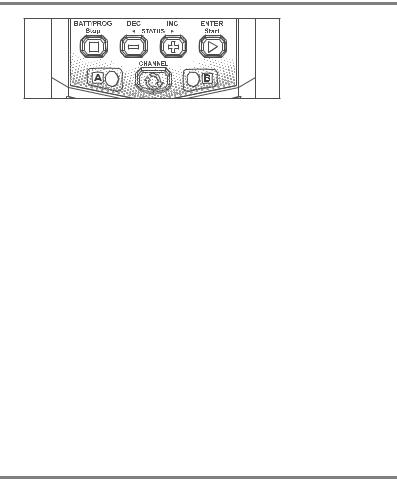
Explanation of Buttons
BATT PROG / STOP Button:
It is used to stop the progress or go back to previous step/screen
DEC Button:
It is used to go through the menus and decrease the parameter value
INC Button:
It is used to go through the menus and increase the parameter value
ENTER / START Button:
It is used to enter parameter or store parameter on screen.
CHANNEL Button:
It is used to switch from Channel A to B or vice versa.
When you are willing to alter the parameter value in the program, press the START/ENTER button to make it blink then change the value by pressing DEC and INC button. The value will be stored by re-pressing the START/ENTER button. If there is another parameter can be altered in the same screen, when you confirm the first parameter value, the next parameter value will start to blink which means it is ready to alert.
When you are willing to start the progress, press and hold the START/ENTER button for 3 seconds. When you are willing to stop the progress or go back to previous step/screen, press the BATT PROG/STOP button once.
When you power on the charger, it will enter LiPo Battery balance program directly. You could change the mode (balance mode, normal charge mode, fast charge mode, store mode or discharge mode), enter the desired charging/discharging mode, set the referred parameter and start the progress.
If you have no request for LiPo Battery program, please press the BATT PROG/STOP button to enter BATT PROGRAM screen.
T200 |
09 · |

Power and Battery Connection
1.Connecting to power source
There are two kinds of inputs for SKYRC T200, DC 11-18V and AC 100-240V.
AC 100-240V power source connection.
12V DC Battery / DC power supply connection.
XT60
· 10 |
T200 |
